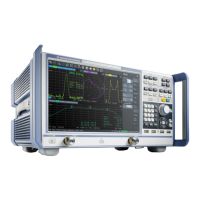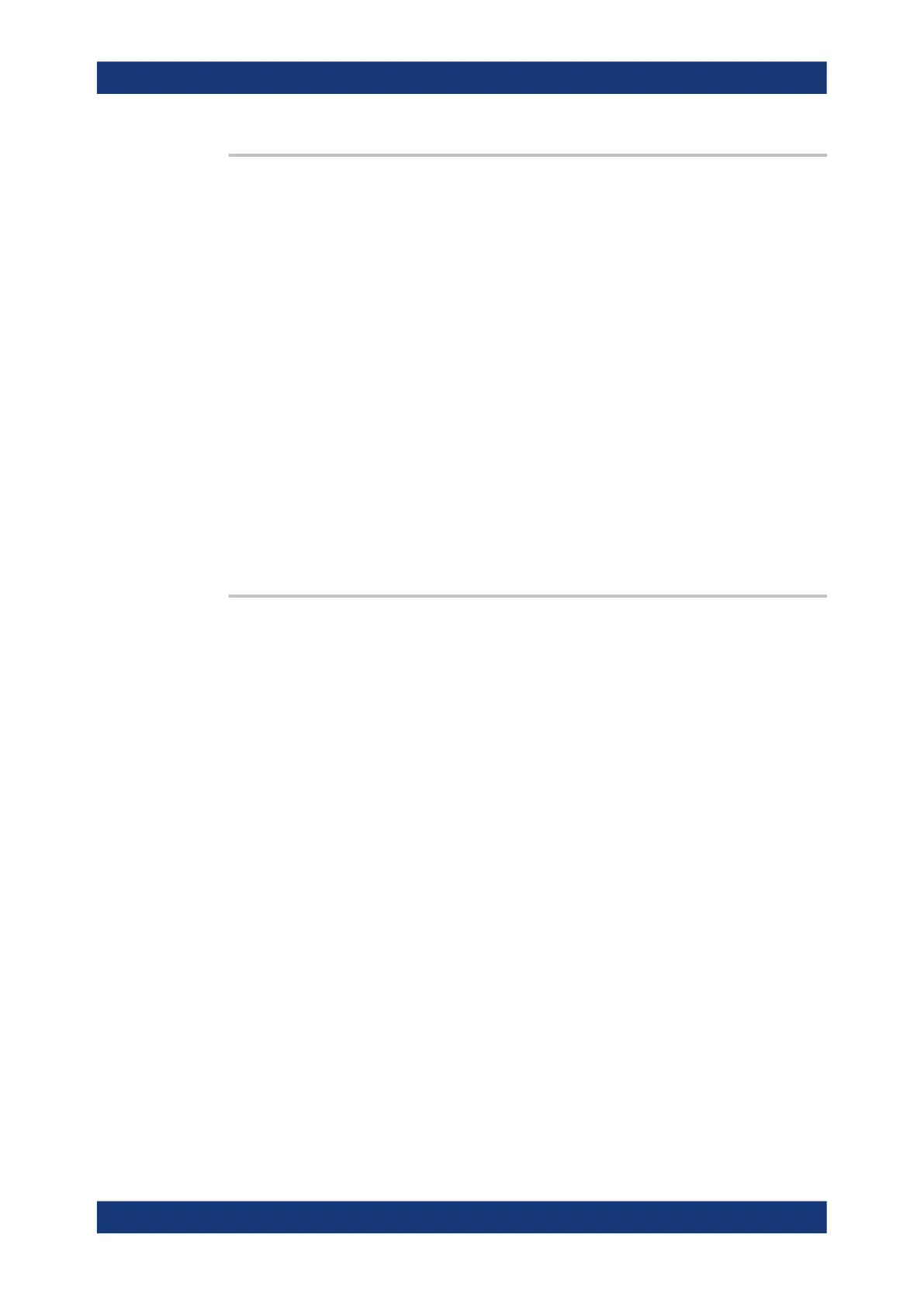Command Reference
R&S
®
ZNB/ZNBT
879User Manual 1173.9163.02 ─ 55
CALCulate<Chn>:MARKer<Mk>:FUNCtion:DOMain:USER:STARt
<StarSearchRange>
CALCulate<Chn>:MARKer<Mk>:FUNCtion:DOMain:USER:STOP
<StopSearchRange>
These commands define the start and stop values of the search range selected via
CALCulate<Chn>:MARKer<Mk>:FUNCtion:DOMain:USER[:RANGe].
Suffix:
<Chn>
.
Channel number used to identify the active trace
<Mk> Marker number.
Parameters:
<StopSearchRange> Beginning or end of the search range.
Range: Maximum allowed sweep range, depending on the
instrument model and on the sweep type.
Default unit: NN
Example: See CALCulate<Chn>:MARKer<Mk>:FUNCtion:DOMain:
USER[:RANGe]
Manual operation: See "Search Range" on page 367
CALCulate<Chn>:MARKer<Mk>:FUNCtion:EXECute [<SearchMode>]
Selects a search mode for marker no. <Mk> and initiates the search. The marker must
be created before using CALCulate<Chn>:MARKer<Mk>[:STATe] ON (exception:
bandfilter search).
Suffix:
<Chn>
.
Channel number used to identify the active trace
<Mk> Marker number. For a bandfilter search (BFILter) this numeric
suffix is ignored and may be set to any value because the band-
filter search functions always use markers M1 to M4.
Setting parameters:
<SearchMode> MAXimum | MINimum | RPEak | LPEak | NPEak | TARGet |
LTARget | RTARget | BFILter | MMAXimum | MMINimum |
SPRogress
See list of parameters below.
Example: Suppose that the active recall set contains an active trace no. 1.
CALC:MARK ON
Create marker M1 and assign it to trace no. 1.
CALC:MARK:FUNC:EXEC MAX; RES?
Move the created marker to the absolute maximum of the trace
and query the stimulus and response value of the search result.
Usage: Setting only
Manual operation: See "Max / Min" on page 365
The analyzer provides the following search modes:
SCPI Command Reference

